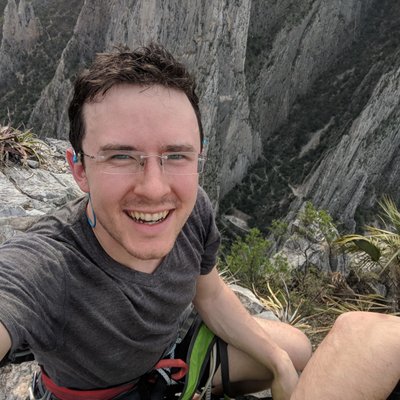 Microconf Recap
Microconf Recap
The State of Bootstrapping in 2019
Rob Walling
Serial entrepreneur, author, angel. Founder of https://tinyseed.com/, MicroConf, Drip. Author of Start Small, Stay Small.

This talk comes out of six months of sitting back and watching the bootstrapper scene, and Rob's experience bootstrapping for the last 14 years. In that time, Rob has written 2.1 books, 400 blog posts, 638 podcast episodes, and hosted 16.5 Microconfs. He's made about 15x more money than all of those projects combined from SaaS.
But first, make sure not to lose track of why you're doing this:
- freedom: don't work on shit jobs for people you don't like
- purpose: work on something fascinating that you feel proud of
- relationships: family, collegal, and tribe relationships bring life fulfilment
5 things that have held true over the past 14 yeras
Recently, Rob has answered 127 email or voicemail questions on the podcast. In the last 45 days, he's had 71 calls with founders, and over 90 email threads. This wide exposure gives him a broader perspective than just running one company.
1. Tactics have a half-life
As you're learning things, keep in mind that our industry changes so quickly that strategies won't work forever. There's real risk long-term with these types of businesses. Dry cleaners and car washes can exist unchanging for decades.
Tacts like listing keywords at the bottom of your webpage for SEO, super cheap facebook ads, and cold email aren't the killer strategies they used to be.
2. You're probably still not charging enough
See Patrick McKenzie
3. SaaS takes too long to reach escape velocity
Long slow SaaS ramp of death is still real. Even Jordan Gal going all-in took 27 months to hit escape velocity. Even multimillion dollar apps have a painful
4. There are no cinderella stories
Under the covers, it's always a shit show. Everything is always breaking, an employee just quit, and API just broke, and it's been that way for 14 years.
5. Every year SaaS gets more competitive
The number of marketing SaaS companies in existance has doubled almost every year since 2013. There are similar trends for the amount of investment money in the SaaS space.
14 trends from the past 14 years
A good hockey player plays where the puck is. A great hockey player plays where the puck is going to be.
Trends in the SaaS space can fundamentally change how you run a SaaS business.
- split testing (2008)
- email marketing (2009)
- customer development (2010): you should talk with your customers before building something!
- VAs (2010)
- MicroConf (2011)
- Masterminds (2012)
- Retreats (2012)
- Cold Email (2012): this worked surprisingly well at the time
- Webinars (2013)
- Marketing automation (2013)
- Bootstrapper exits (2014)
- SEO Bloodbath (2014)
- Bootstrappers raising money (2015)
- "Flat" design (2015)
- SaaS debt financing (2016)
- Indie.vc (2016)
- Chat Bots (2016)
- LinkedIn outreach (2017)
- Alternative funding (2018)
- TinySeed (2018)
Boostrappers and funding
There's not a hard line between bootstrapping and funded companies anymore, and raising a little bit of money can make your life much easier.
The most dangerous phase of a startup is before you've reached startup velocity. This Trough of Sorrow is when you can lose motivation, stress out, run out of cash, and give up. Working nights and weekends makes building startups difficult.
Pushing past that means living off of savings, going into debt, or getting seed funding. Bootstrappers are intrensically anti-VC-funding, but they don't necessarily need to be anti-funding.
The founder of Datanyze, Ilya Semin, was growing very rapidly - $10k MRR per month. He emailed Rob asking for Rob to talk him out of taking venture money with strings attached. Rob established that they weren't asking for control of the company, weren't pressuring him to hire or grow faster, and couldn't block a sale. The terms weren't that bad!
Ultimately, taking funding helped Ilya because hiring became easier, his company gained credibility, and the extra capital gave him breathing room to grow.
VC funding isn't necessarily something you should consider, but other models of funding might make more sense depending on the terms.
Questions
This paints kind of a black picture. What's the encouraging news?
There are more options now than at any time in the past. It's always been hard, but it's still possible to build a great software business.
Can you be a bootstrapper and take money?
By the time Drip was profitable, I'd put $200k of my own money into it. Did I bootstrap it? Did I self fund? Did I self-angel-invest? To me, Bootstrapping is an ethos. Jason Cohen's WPEngine is valued at half a billion dollars and is part of this community.
Maybe we should call it Microconfing?
Does this type of funding help avoid wasting money?
It depends on the person giving money, and the pressure you put on that team. If I raise a round of $500k, I'm super tight with my money.
What's your advice to cofounders that disagree about raising money?
So Dr. Sherry Walling is really good at helping people find common ground.
I can see this money freeing someone up to transition from working nights and weekends to working full time. Would this have made sense for you moving from HitTail to Drip?
It depends on how you think about risk. There are founders that save 18 months of runway, and that's super impressive to me.
If I had the opportunity to take funding like this, I probably would've put the money from HitTail in my bank account and taken the money. I prefer to risk someone else's money than my own.
Contact Rob Walling at rob@tinyseed.com.
Free "Microconf Recap" eBook
I'm sending out a beautiful PDF eBook of notes from every MicroConf Starter and Growth talk – both Speaker and Attendee. Want a copy?

